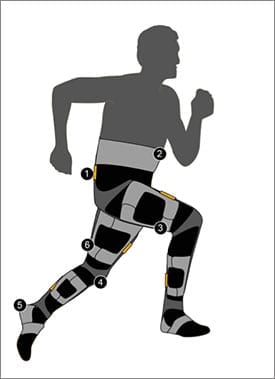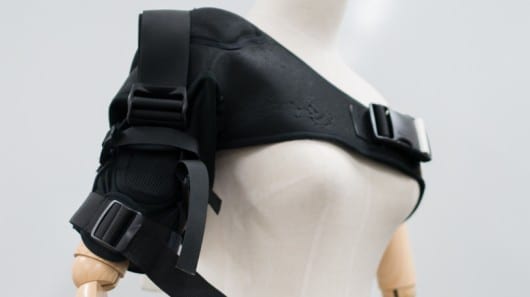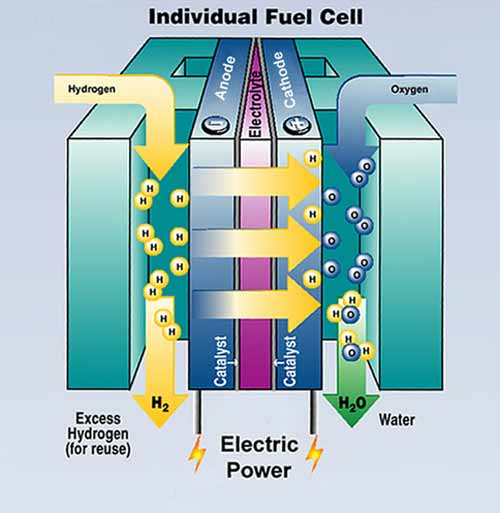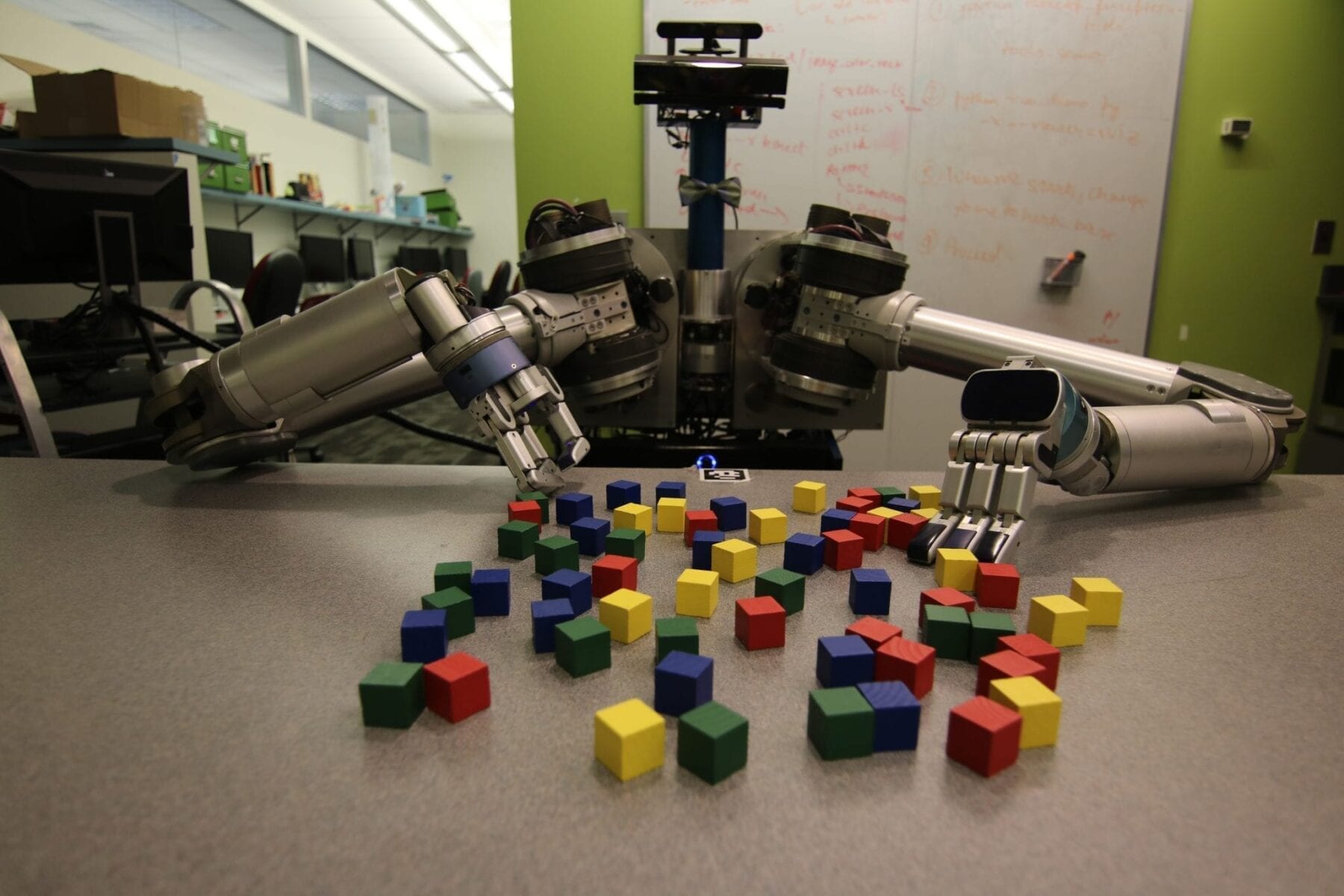
Lightweight suit to increase the wearer’s strength and endurance
For decades engineers have built exoskeletons that use rigid links in parallel with the biological anatomy to increase the wearer’s strength and endurance, and to protect them from injury and physical stress. In recent years, a number of systems have been developed that show strong commercial potential for helping spinal-cord injury patients walk, or helping soldiers carry heavy loads. In these systems, there is an exoskeleton structure in parallel with the wearer’s skeletal structure that is typically connected at a few locations on the body using straps or belts. These devices use motors or elastic materials to assist with joint movements, thereby enhancing human power. However, exoskeletons often fail to allow the wearer to perform his or her natural joint movements, are generally heavy, and can hence cause fatigue.
The Wyss Solution
Targeting a specific set of applications where a wearer needs some partial assistance from a robot, Wyss Institute researchers are pursuing a new paradigm: the use of soft clothing-like “exosuits.” An exosuit does not contain any rigid elements, so the wearer’s bone structure must sustain all the compressive forces normally encountered by the body — plus the forces generated by the exosuit. The suit, which is composed primarily of specially designed fabrics, can be significantly lighter than an exoskeleton since it does not contain a rigid structure. It also provides minimal restrictions to the wearer’s motions, avoiding problems relating to joint misalignment.
Exosuits exemplify a new class of applications for soft robotics, an emerging field that combines classical robotic design and control principles with active soft materials.
Potential applications:
- Help able-bodied soldiers perform difficult physical tasks
- Assist the elderly in maintaining or restoring their gait
- Rehabilitate children and adults with movement disorders such as cerebral palsy
- Ease the physical burden of firefighters, paramedics, farmers and others whose jobs require them to carry heavy loads
Learn more: Soft Exosuit
The Latest on: Soft clothing-like exosuits
[google_news title=”” keyword=”Soft clothing-like exosuits” num_posts=”10″ blurb_length=”0″ show_thumb=”left”]
via Google News
The Latest on: Soft clothing-like exosuits
- Top 5 Best Clothes Hangers in 2024on April 20, 2024 at 5:00 pm
It depends on your personal preference and the type of clothes you have. Wooden hangers are sturdy and durable, making them a good choice for heavier items like coats and suits. They also have a ...
- How to pack clothes for moving: 3 methods to tryon April 18, 2024 at 5:00 pm
Laydown wardrobe boxes are also for transporting hanging clothes. Unlike traditional wardrobe boxes, laydown wardrobe boxes are designed to lay flat on the ground or on top of other items.
- 15 sustainable clothing brands to help you feel better about your closeton April 15, 2024 at 5:57 am
“Sustainable fashion usually means eco-friendly practices in the fashion industry, referencing the approach of designing, producing and consuming clothes that respect the planet by causing ...
- 17 Best Baby Clothes Brands and Retailers to Shop Nowon April 4, 2024 at 3:24 pm
Generally, there are two types of baby clothes ... like Christmas and Valentine’s Day. (Matching jammies, anyone?!) The clothing isn't all about the fun prints, though. The material is super ...
- How to Use Vinegar in Laundry to Eradicate Smells and Moreon March 21, 2024 at 5:00 pm
It was something that I’d seen for years, and I have to admit, I put off trying it because I was worried about my clothes smelling like pickles ... use to get super soft clothes—naturally.
- The Best Men’s White T-Shirtson March 5, 2024 at 4:31 am
It was soft—though not the softest we tested. Wired’s Alan Henry praised its double-seamed hems, a sturdy feature that made him feel like he could ... s most-loved clothing and accessory ...
- How to wash your clothes on the right setting without damaging them, according to an experton June 19, 2023 at 8:28 pm
“This might seem like a sacrifice for fragrant and soft clothes, but when you look closer you will realise you’re making certain garments less effective,” he says. Instead, he recommends ...
- How to Wash White Clothes to Keep Them Looking Bright and Newon September 6, 2021 at 5:00 pm
To remove stains, slip a cloth inside the clothing item to avoid transferring the stain to the other side of the garment. Blot as much of the stain as you can (for food, paint and the like ...
- Can You Use Soft Factors Like Purpose And Agility To Enable Success?on November 24, 2018 at 9:05 am
Opinions expressed by Forbes Contributors are their own. I help family offices solve strategy problems and innovate. Most family businesses measure and track performance against a set of rather ...
- Clothing Sizes: How Vanity Sizing Made Shopping Impossibleon September 1, 2016 at 5:03 am
And when we can’t find clothes that fit, let alone clothes we like, it can be infuriating. The debate over sizing is an emotional one, especially right now, when so many shoppers are rejecting ...
via Bing News










